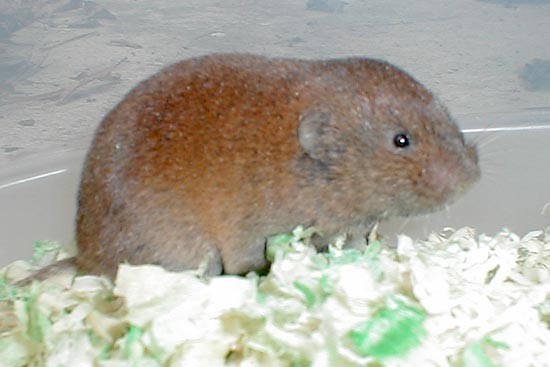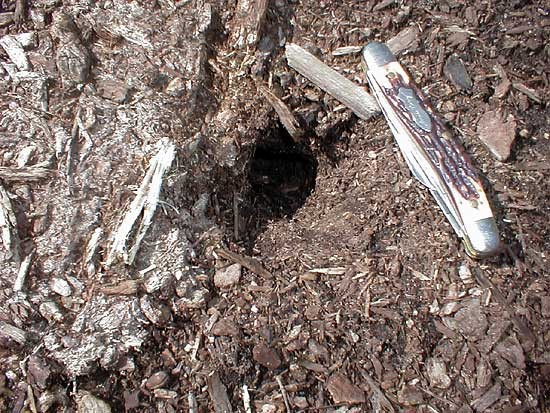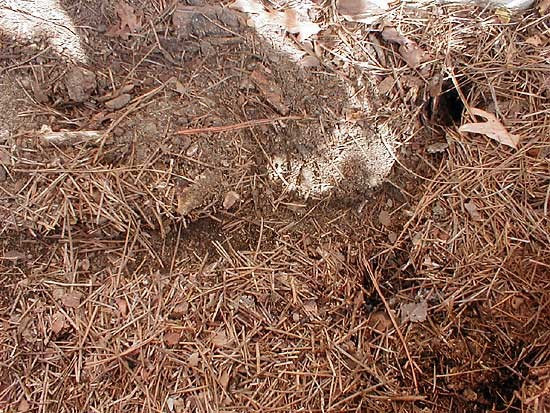Microtus pinetorum
Woodland vole, pine mouse, mole mouse, potato mouse,
mole pine mouse, bluegrass pine mouse
Pine Voles can be controlled with the Vole Control Bait Station System using the Mulch Covered Method.
 Pine Vole |
 Picture from - National Museum of Natural Picture from - National Museum of NaturalHistory ©2004 Smithsonian Institution |
Area of Distribution
Pine voles live underground in burrows and under mulch and litter. They are concentrated in the eastern United States.
Physical characteristics
The pine voles overall body length varies from 3 to 5 ½ inches long, weighing 1 ounce or less, reddish brown fur, a short ½ inch tail and tiny ears and eyes that are not visible. Its fur is soft and dense. The under parts are gray mixed with some yellow to cinnamon.
Reproduction
Female pine voles have a gestation period of about 24 days, have an average litter size of 2.8, and produce four to six litters per year. They reach sexual maturity at 37 to 38 days and have a reproduction life span of 15 to 18 months. (You do the math. That can be a lot of voles!) Vole numbers fluctuate from year to year and under favorable conditions their populations can increase rapidly.
Ecology
The pine vole does not use surface runways, but they do occasionally go above ground to explore new food sources and disperse to new territories. They build an extensive system of below ground tunnels, and spend little time above the leaf litter and groundcover layer. Pine voles like to make tunnels or runs along house foundations, stone walls, and among perennials and groundcovers. They are also attracted to fallen birdseed from feeders. A pine vole's underground tunnels are a network of winding trails or long narrow trenches or runways that are serpentine, and that wind around obstructions under the mulch and within a few inches of the soil surface, with the nest located centrally, about 12" under ground. The vole colony may occupy an area of 30 feet in diameter, or so. The shape of their home range need not be circular, but in orchards a colony claim the area within the drip line of a mature apple tree.
Signs of Pine Vole Activity and Recommendation for Control
Pine voles damage trees, shrubs, bulbs and perennials from below the ground consuming small roots, girdling larger roots and eating bark from the base of small trees, thus making them harder to detect. Plants severed from the roots make it possible to easily pull the top of the plant out of the soil. By the time you notice weak, unhealthy plants, the damage is already extensive. Plants not killed outright may be invaded by diseases or die from water stress during periods of drought. Many times moles are blamed for this damage because voles can use mole tunnels to reach plant roots and bulbs.
 |
Look for signs of stress in your ornamental plantings. Search and feel for underground tunnels around the base of the stressed shrubs that may reveal vole activity. If you detect tunneling, then set up a test in the area with the Apple Sign Test to confirm activity. If voles are the culprits, then install a Vole Control Bait Station System in the area. |
 |
Look for entrance holes about 1 to 1 ½ diameter in the mulched areas. |
| Pine voles like to tunnel under objects that are lying on the ground such as these stepping stones. Notice the burrows and trenches they make. |  |
